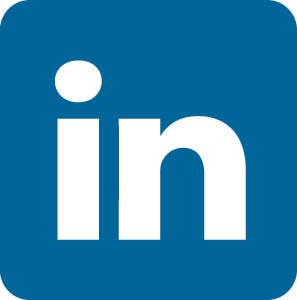For most recruiters, LinkedIn’s updated user agreement that goes into effect Thursday doesn’t change much. Recruiter customers will still be able to search for candidates, download profiles, send InMails, and generally source as they have before.
The biggest change is that LinkedIn says you own the content you post on the site. That, and the simplicity and clarity of the wording of the updated terms of service, have earned LinkedIn kudos with one writer calling the changes “monumental for the industry.” More about that later.
For recruiters who use LinkedIn mostly or exclusively for sourcing, the impact of the updated TOS is minimal. The most significant addition is one that limits the use of information in member profiles. It bans sharing or disclosing “information of others without their express consent.” That’s a restriction that doesn’t apply to Talent Solutions customers, but it does to others. A recruiter who captures information from a public profile could, technically, be found in violation of the TOS, however policing such a casual use is practically impossible. More likely, the provision is there to backstop the prohibition against the wholesale downloading or scraping of member information, as was the case with HiringSolved.
Use Caution With Invites
Another provision, which has been in previous iterations of the terms of service, says you shouldn’t send invites to people you don’t know. Because they are free to send, unlike InMails which cost, some recruiters use connection invitations to reach out to potential candidates. That’s been a “Don’t” for some time, but rarely is an issue, unless a recipient complains.
The specific language says users will not “Invite people you do not know to join your network.” In another of the Don’ts in the new Terms of Service, LinkedIn says you can’t, “Use LinkedIn invitations to send messages to people who don’t know you or who are unlikely to recognize you as a known contact.”
If that seems an odd restriction for an organization promoting connectivity and networking, well, it is. Or it would be if it was strictly interpreted. But it isn’t; it hasn’t been; and the restatement of the invite policy doesn’t require that you have an acquaintanceship with the person before inviting them to join your network.
Instead, a company spokesman explained, “In plain English, that means ‘you agree not to send spam or unwelcome connection requests and messages to members’.” Including a brief note explaining the reason behind the connection request would likely make it legitimate, “because (the recipient would) understand why the person wanted to connect, and realize the value of connecting professionally with that person.”
Sending invites to strangers who fit a candidate profile with no other connection would likely be considered spam, the spokesman said, which could result in getting a recruiter — or anyone doing that — booted from LinkedIn.
While these provisions have been the subject of some negative speculation about their impact on recruiters, the revised TOS has more generally been praised for its clarity, and especially for LinkedIn’s disavowal of exclusive ownership of user content.
Content Ownership
In a blog post, LinkedIn’s lead IP lawyer, Sara Harrington, wrote: “You own your content that you post on our services. You always have, and that hasn’t changed.” She highlighted some of the new and improved provisions from the updated TOS:
- We don’t have exclusive rights to your content. It’s yours, so you’re free to repost your content on other services on the terms of your choice.
- If you delete anything from our services, our rights to it will end.
- We don’t license or sell your content to third-parties (like advertisers, publishers, and websites) to show to anyone else without your express permission.
A Forbes commentator described LinkedIn’s TOS update as “monumental for the industry.” Another, praising the changes, said, “LinkedIn is taking the first good steps for ensuring longer-term loyalty.”
